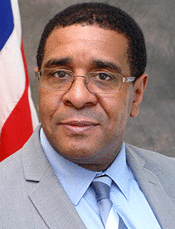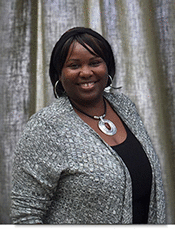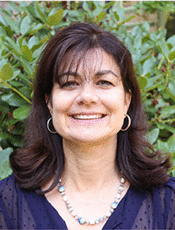For more than two decades, lifesaving treatments for people living with HIV (PLWH) have resulted in increased life expectancy, improved quality of life, and reduced HIV transmission. Yet for many reasons—including structural, financial, and social barriers arising from economic, racial/ethnic, and gender disparities—some PLWH may never be diagnosed or may delay entering care upon diagnosis. PLWH who experience homelessness or unstable housing with co-occurring mental health and substance use disorders present a formidable challenge for medical providers and public health authorities seeking to engage and retain them in care and provide treatment because of a fragmented health care and social service system. The daily imperative of meeting subsistence needs, such as housing and food, makes getting any form of medical care a secondary concern.
The current opioid epidemic is a reminder of the link between HIV and homelessness and the importance of addressing both public health challenges. People who experience homelessness or unstable housing have an increased risk of HIV because of higher rates of substance use, exposure to violence, and mental illness. For PLWH who experience homelessness or unstable housing, the risks of falling out of care or failing to reach viral suppression are increased as priorities shift to finding a safe, secure place to live rather than adhering to HIV medication.
The Ryan White HIV/AIDS Program (RWHAP), administered by the Health Resources and Services Administration (HRSA), HIV/AIDS Bureau, provides a comprehensive system of HIV medical care, medication, and support services to more than half a million people each year, including those experiencing homelessness. In 2016, 84.9% of RWHAP clients receiving HIV medical care were virally suppressed. Disparities in HIV treatment access, retention in care, and health outcomes persist among those who are unstably versus stably housed. To reduce these disparities, a coordinated response of resources and implementation of innovative models of care between medical, substance use treatment, mental health, housing, and other social service providers are critical to reduce homelessness and improve access to care and health outcomes for PLWH.
In response to this public health challenge, the HRSA is working with the Department of Housing and Urban Development (HUD) to coordinate resources and ensure that PLWH have access to housing assistance through programs such as the Housing Opportunities for Persons With AIDS. Through the RWHAP Part F Special Projects of National Significance Program, HRSA funded the national initiative Building a Medical Home for Multiply Diagnosed HIV-Positive Homeless Populations to address social needs, such as housing and access to behavioral health care, that affect HIV care and treatment. This HRSA initiative and other programs support the development and implementation of patient-centered models of HIV care by building community partnerships and coordinating and using resources between the RWHAP medical and housing providers to continue breaking down barriers to care.
One of the goals of the National HIV/AIDS Strategy of the United States: Updated to 2020 is to reduce the percentage of persons in HIV medical care who are homeless to no more than 5%. HRSA’s decision to fund this national initiative is an indicator that purposeful and thoughtful work is needed to meet this goal. The articles in this issue of AJPH highlight best practices and lessons learned for providing patient-centered care, coordinated health care, housing, and social service system changes that are necessary to reduce homelessness and promote access to HIV, substance use, and mental health services for PLWH with multiple comorbidities. We hope that the findings will lead to further adoption and integration of these innovative interventions by other RWHAP and HUD grant recipients and public health organizations serving HIV and homeless populations.
5 Years Ago
Homeless Veterans Enrolled in a Medical Home Model and Reduced ED Use
Almost all of the homeless study participants had at least 1 newly diagnosed condition during the first 6 months of [medical home] enrollment and averaged 4.1 diagnoses per person; two thirds of participants were diagnosed with a new chronic medical condition, 45.7% had a new mental health diagnosis, and 28.3% had a new substance abuse diagnosis. . . . Notably, 26% of the cohort stopped going to the ED after 3 months of primary care enrollment. . . . More directed research is needed to better understand the role of treatment engagement in this process. . . . High-volume primary care and medical home engagement can significantly reduce reliance on ED care and represents an opportunity to effectively engage individuals in care while reducing the overuse of ED care in the process.
From AJPH, Supplement 2, 2013, pp. S377–S378
19 Years Ago
Children’s Disengagement from Medical Homes as a Public Health Problem
Our data . . . showed that disengagement from medical homes has a significant effect on the assessment of vaccination coverage rates. Across our network . . . 51% of the children aged 6 through 24 months enrolled in the practices had up to date recommended immunizations for diphtheria-tetanus-pertussis, oral polio-virus, and measles-mumps-rubella. . . . Disengagement.… has been consistently shown to result in poor health outcomes. . . . Strategies are urgently needed to reengage “lost” children from medical homes because these children are at especially high risk for adverse health outcomes.
From AJPH, February 1999, pp. 157–158
Biography



Contributor Information
Harold J. Phillips, HIV/AIDS Bureau, Health Resources & Services Administration, Rockville, MD.
Melinda J. Tinsley, HIV/AIDS Bureau, Health Resources & Services Administration, Rockville, MD.
Serena Rajabiun, Center for Innovation in Social Work & Health, Boston University School of Social Work, Boston, MA.


